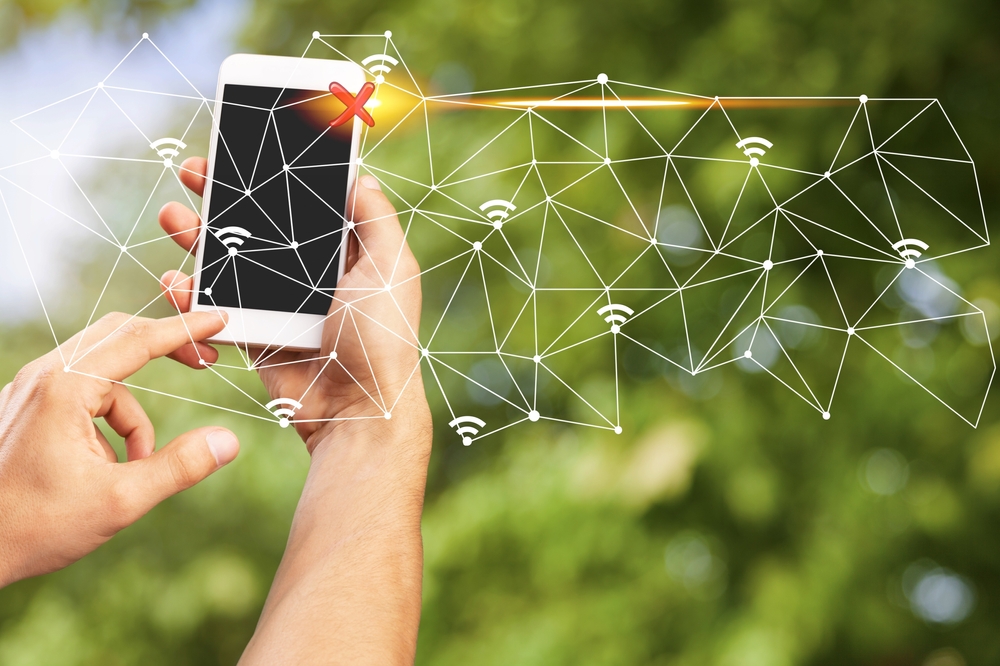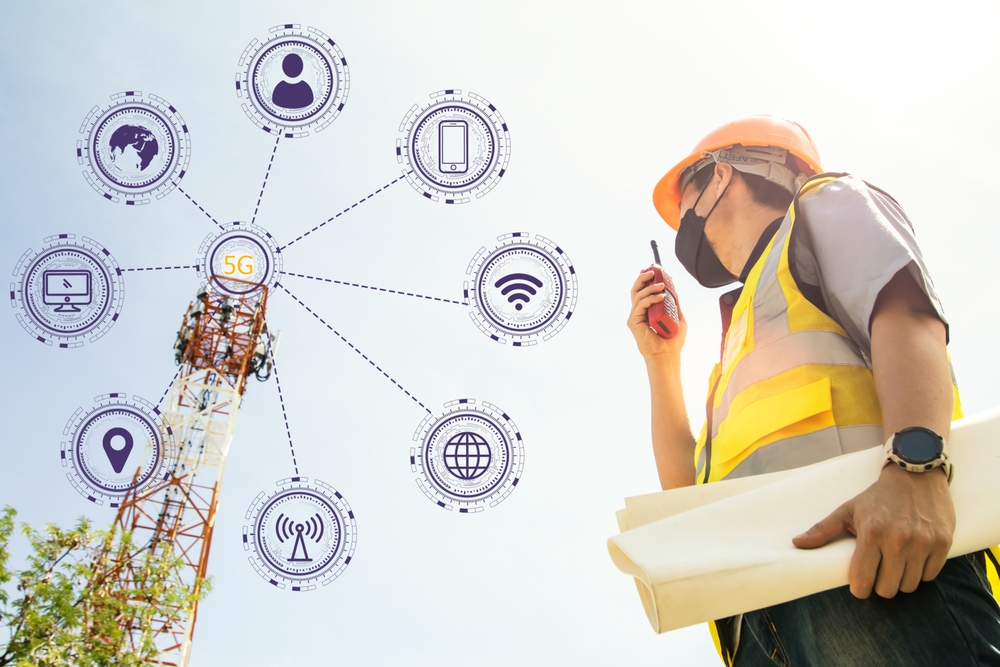In the Philippines, mobile phones are the lifeline of communication for over 149 million mobile subscribers, so having strong network coverage is crucial.
Imagine the hassle of a dropped call or a delayed text in the middle of an important conversation. For this reason, you need to choose a mobile carrier wisely.
In line with that goal, this blog explores what mobile phone network coverage and signal strength are and examines the leading mobile carriers in the country so you can make an informed choice.
What is Network Coverage and Signal Strength?

Network coverage refers to the geographical area where a mobile carrier’s service is available. On the other hand, mobile phone signal strength gauges the quality of the connection within the covered area.
Technically, you can measure signal strength in decibels relative to a milliwatt (dBm). The perfect standard is -30dBm, but it is rare.
For optimal performance, a range between -30dBm and -60dBm is desirable to ensure fast and reliable data delivery.
You can check your phone’s signal strength using speed test apps. Alternatively, you can simply look at the signal bars at the top of your phone—the more bars you see, the stronger your signal.
If you use a mobile carrier with comprehensive network coverage, you can have uninterrupted service in urban and rural areas.
Conversely, if your carrier has limited coverage, you might experience signal loss in selected city parts, rural areas, or challenging terrains such as mountains and forests.
Types of Mobile Phone Signals
You might notice signal symbols on your phone during Wi-Fi or mobile data use. Familiarizing yourself with them is essential for a smooth and reliable mobile experience.
-
GPRS (Global Packet Radio Service)
This type was the first network connection for mobile phones using the global system for mobile communications or GSM—the technology that a SIM card employs to connect with a digital mobile network.
It’s usually indicated as “G” next to a phone’s signal bars.
While it provides a basic form of mobile data, it’s relatively slower than more advanced technologies.
It typically reaches speeds between 40 Kbit/s to 50 Kbit/s. Smartphones with 3G or 4G service no longer offer GPRS. However, rural areas lacking advanced technology still use the latter.
-
EDGE (Enhanced Data Rates for GSM Evolution) or E
EDGE is an improvement over GPRS, offering faster data transfer speeds.
Smartphones today still use EDGE service, albeit as a last resort for connection. It’s not fast enough to provide internet access, but it can help you send texts and connect to calls at around 400 Kbit/s.
You can see it as “E” beside your signal bars.
-
3G
3G is a notable advancement in mobile communication, serving as a pivotal bridge between the earlier 2G technologies like GPRS and EDGE and the more advanced 4G networks.
It offers faster data speeds for web browsing and video calling and has a crucial role in transitioning from the limitations of 2G to the more robust capabilities of subsequent generations.
It usually reaches speeds from 384 Kbit/s to 42 Mbit/s.
-
4G
Also known as Long Term Evolution or LTE, 4G brings even higher data speeds and improved network reliability.
It is the standard for high-speed wireless communication, enabling smoother video streaming, online gaming, and other data-intensive applications. It can reach speeds of up to 1 Gbit/s.
The impact of this signal generation is phenomenal.
Its improved network capacity and efficiency make 4G pivotal in developing the Internet of Things (IoT), where everyday devices like smart homes and wearables communicate with each other.
4G precedes the 5G generation of mobile technology, which promises even greater speeds and a wider range of applications.
-
5G
The latest mobile technology, 5G, delivers significantly faster data speeds, lower latency, and support for numerous connected devices.
Due to its enhanced capabilities, it can revolutionize healthcare, transportation, smart cities, etc.
Its speed is between 10 Gbit/s and 20 Gbit/s, surpassing Wi-Fi networks. Suffice it to say that 5G, up to this point, is the ultimate end product of years of hard work and continuous development.
Currently, 5G is the peak of mobile phone signal performance and a benchmark for future developments.
Network Coverage and Signal Strength of Philippine Mobile Carriers
The three leading mobile carriers in the Philippines vary in area coverage and signal strengths.
-
DITO Telecommunity
DITO primarily provides 4G services throughout the Philippines. Currently, it deploys 5G services in selected regions and cities, including Metro Manila, Batangas, Bacolod, Cebu, and Davao.
This carrier has the distinction of offering the most consistent, high-quality network coverage. Also, it has the fastest increase in download speeds (32.3%) compared to Smart (12.7%) and Globe (14.8%).
-
Smart Communications
Smart has the broadest mobile phone network coverage for 5G compared to DITO and Globe. It’s currently available in more than 4,000 sites. Smart is also popular for having the best 5G download speed, availability, and reach.
Nonetheless, Smart still offers 4G services nationwide. However, it’s unavailable in the more mountainous areas of some provinces, such as Cagayan Valley, Cordillera Administrative Region, and Zamboanga Peninsula.
While Smart still enables 3G, it plans to shut down the service to focus on 4G and 5G.
-
Globe Telecom
Globe mainly offers 4G and 4G+ services nationwide, save for a few rural areas in the Cordillera Administrative Region, Cagayan Valley, and Soccsksargen.
Similar to DITO, Globe is in the process of rolling out 5G services nationwide. It’s available in select regions and cities such as Metro Manila, Rizal, Nueva Ecija, Laguna, Batangas, Cebu, Iloilo, Davao Del Sur, and Agusan Del Norte.
Globe offers the best experience for video streams, multiplayer mobile games, and voice apps on all signal types compared to the other mobile carriers.
5 Tips to Boost Mobile Phone Signal Strength
Signal loss can occur even in areas with network coverage. Here are some ways to enhance your mobile phone’s signal strength.
1. Restart your phone
When moving around, your phone tries to find the best cell tower signal. However, sometimes, the transition between towers isn’t perfect, leading to a weaker signal.
Also, like a computer, your phone’s software can have temporary issues that affect its ability to connect to a network smoothly.
In such instances, you should restart your phone to resolve these temporary hitches and ensure a more robust and reliable signal.
In some cases, restarting your device allows it to return to its default setting, which can help achieve optimum performance for mobile phone signal strength.
2. Clean or buy a new SIM card
Over time, SIM cards can endure wear and tear. Constant insertions and ejections can cause the gold contacts on the chip to misalign or be damaged.
Dust, pocket lint, and other debris can also accumulate on these contacts, creating a physical barrier that disrupts the signal transmission.
These seemingly minor issues can have major consequences for your mobile experience.
Hence, you should clean your SIM card or invest in a new one for your device and network to have a smooth and secure connection. A SIM card replacement can also potentially enhance signal reliability.
3. Check your frequency bands
Frequency bands refer to the specific radio frequencies allocated for wireless communication. In the context of mobile networks, different signals use distinct frequency bands.
Checking if your phone supports your carrier’s frequency bands can optimize compatibility and improve signal strength.
All you need to do is go to your phone’s settings and look for “Network Information” for Android or “Cellular” or “Network” for Apple.
4. Check for software updates
As a large number of Filipinos use smartphones, outdated software can contribute to signal issues.
For this reason, you should regularly update your phone’s software to equip it with the latest enhancements and optimizations that can address signal strength issues and improve overall performance.
If your mobile phone can no longer accept software updates, you should consider buying a new one that can handle the unique features of modern signal enhancements.
5. Use a cellphone signal booster
A signal booster or repeater captures, amplifies, and redistributes cell tower signals within a designated area.
Additionally, it boosts and transmits the signal a phone emits back to the cell tower for improved connectivity.
This device is particularly beneficial in remote or low-signal areas, ensuring a consistent mobile experience.
Just remember to get an NTC-authorized booster, as signal boosters must comply with the law and not interfere with the cellular network’s operation.
Don’t Let a Weak Signal Get in the Way
In a world where staying connected is vital, your telecommunication service provider can make all the difference.
A reliable network ensures that every text and call is hassle-free, which is crucial for personal and professional connections.
Consider the points above when choosing the suitable mobile carrier for your needs and boosting your phone signal strength. With the right choice, you invest in dependable communication.
If you’re looking for a reliable telecommunications service provider, look no further than Semaphore. We offer trusted SMS marketing for businesses, helping you reach customers and make every message count.
Check out our SMS services to learn more.
